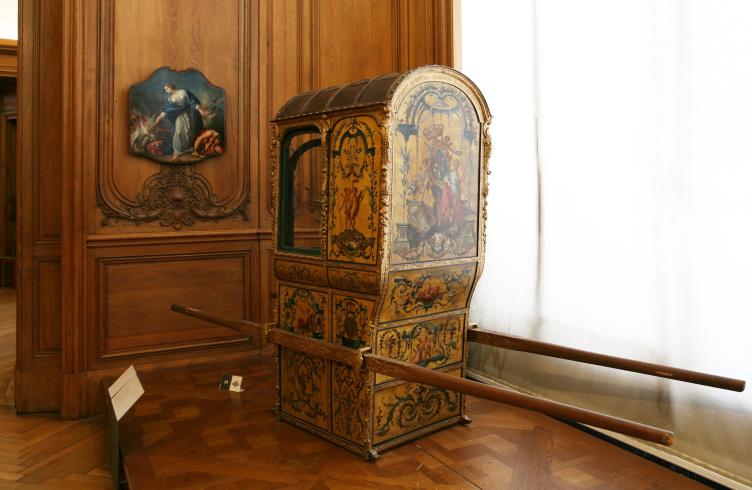The surprising richness of this utilitarian object is explained by the fact that a visitor would step out of the chair under cover in the hallway where it would remain during the visit, becoming part of the decor. It was therefore designed rather as an interior object which was temporarily exposed to inclement weather from which it tried to protect itself with a studded leather roof and panels made of waterproof material such as lacquer or vernis Martin, a lustrous lacquer substitute.
In the period 1690-1720, the arabesque came back into fashion under the influence of painters and decorators following in the footsteps of Jean Bérain (1640-1711). Daniel Marot (1663-1752) created very similar decorations on sedan chairs, but his premature exile to England on religious grounds means that a direct influence cannot be traced here and it is attributed instead to Sébastien Leclerc (1637-1714).
The importance of the owners, Duke Leopold I of Lorraine (1679-1729) and Elisabeth-Charlotte of Orleans (1676-1744), niece of Louis XIV whom he married in 1698, accounts for the exceptional decor of this object bearing their coat of arms. Arabesques surround panels decorated with allegorical figures of Winged Fames, Victories, Mars, or History at work, oblivious to Time sat behind it. These are probably all allusions to the victories of the Dukes of Lorraine, including that of Leopold I himself over the Turks. The crowned cupids are a more appropriate evocation of the union of the two spouses.

City of Paris municipal collection's website
The collections portal can be used to search the collections of Paris’s 14 municipal museums (approximately 336,000 works, including 43,000 belonging to the Petit Palais).
It is also possible to download around 12,000 images of the museum’s works free of charge.
Access the Museums of the City of Paris collections portal
Extern databases
Discover a selection of databases online presenting works from the Petit Palais or documents concerning the history of the museum.

